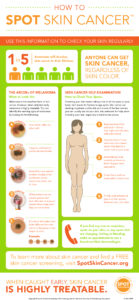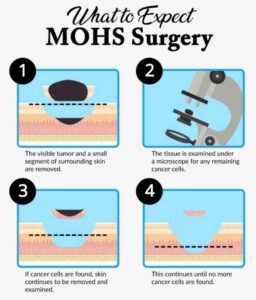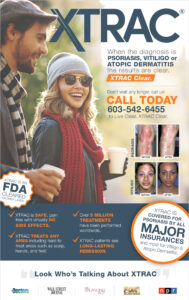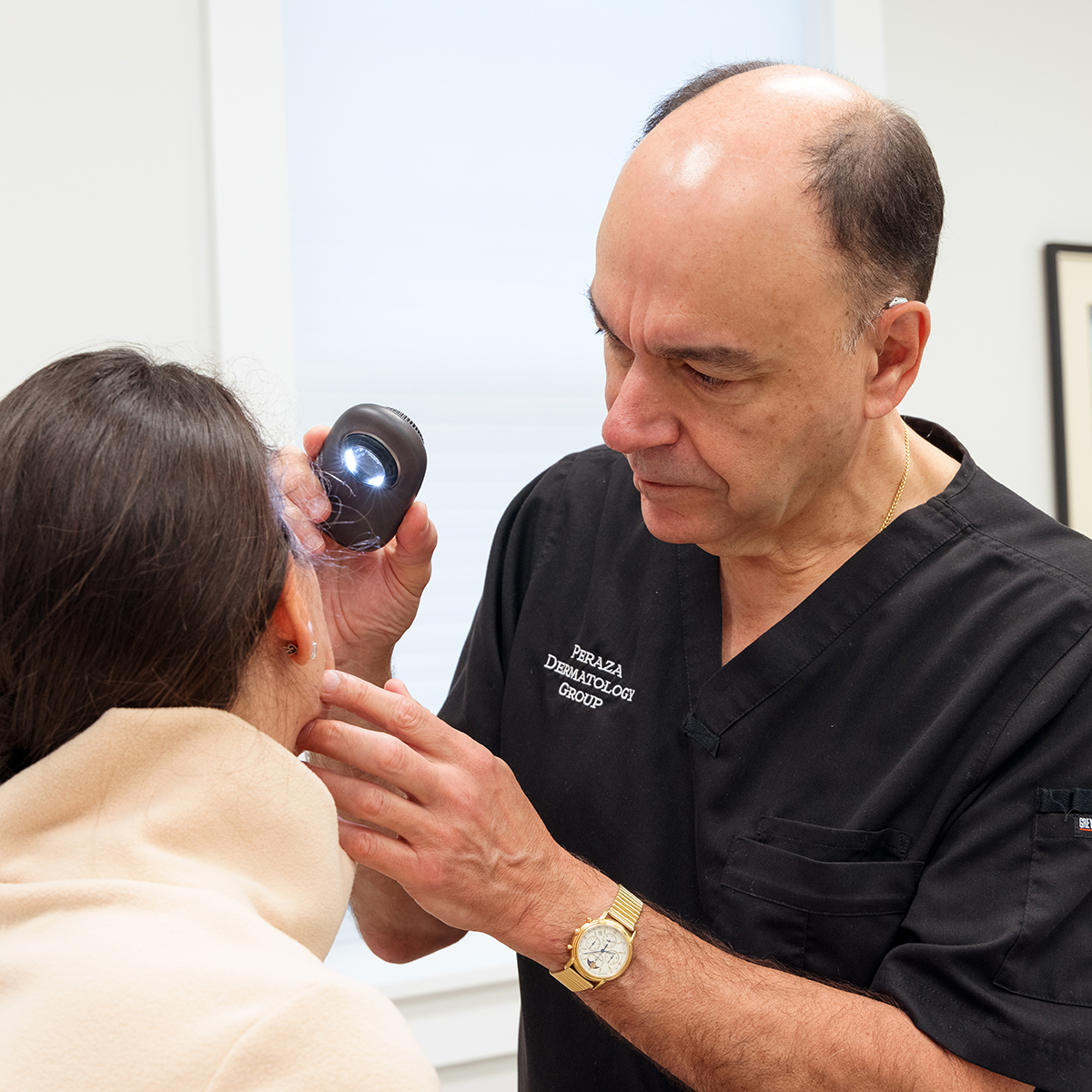Peraza Dermatology Group provides the highest quality diagnostic and therapeutic services to patients of all ages suffering from skin conditions of all types, from the common to the complicated. In addition to mole and skin cancer evaluations, PDG offers several methods of treatment for benign and cancerous skin growths, including basal cell carcinoma, squamous cell carcinoma, and melanoma. Whatever the nature of your issue or the type of care you seek, you can expect respectful consideration and a comfortable environment at Peraza Dermatology Group.
What is it? Acne is the most common skin disorder in the United States, with nearly 85% of people suffering from the condition at some point in their lives. More than 40% of teenagers develop acne scarring requiring treatment by a dermatologist. Acne is a chronic inflammation of the skin that often affects the face, neck, chest, back, shoulders, and upper arms. There are several types of acne — comedones (whiteheads and blackheads), pimples, and deeper bumps (nodules or cysts).
What causes it? The exact cause is unknown, but many factors contribute to acne — overactive oil glands, pores in the skin becoming plugged, the bacterium P. acnes (present on everyone’s skin) causing inflammation in the skin, while genetics, hormones, menstruation, and emotional stress can worsen acne. Prevention of scarring is most important. Squeezing, popping, and picking can cause scarring.
What treatments are available? If over-the-counter medications do not work, there are many other treatment options and choosing the most appropriate — oral or topical antibiotics, oral or topical retinoids, chemical peels, laser treatments (PDT), DiamondGlow™, or hormonal therapy — should be discussed with your dermatologist. Often combination therapy is needed, but acne treatments are usually extremely effective if used consistently and appropriately.
What is it? These common, crusted, red-yellow spots often develop in patients over the age of 40 in sun-exposed areas — the face, head, ears, neck, and tops of the hands. They are usually less than half an inch in size.
What causes it? Risk factors for having actinic keratosis include a history of extensive sun exposure and a fair complexion. Some actinic keratoses can become squamous cell carcinomas, although some go away on their own. An individual spot’s behavior can’t be predicted.
What treatments are available? Multiple treatment options exist, including but not limited to liquid nitrogen, topical medicine, or Photodynamic Therapy (PDT). Patients with multiple actinic keratoses require annual visits and aggressive sun protection practices — sunscreen, sun-protective clothing, and sun avoidance — to limit the development of new actinic keratoses.
What are they? These common, brown, flat lesions occur on sun-exposed skin — face, chest, back, tops of feet, backs of hands — in people with fair complexions. Also referred to as solar lentigines, “brown spots,” or “liver spots,” these age spots can increase in size and number with advancing age. They resemble freckles, moles, or skin cancer, so examination by your dermatologist is important.
What causes them? Age spots are caused by overactive pigment cells. Ultraviolet (UV) light speeds up the production of melanin, a natural pigment that gives skin its color. On skin that has had years of sun exposure, age spots appear when melanin becomes clumped or is produced in high concentrations.
What treatments are available? Various treatments are available to eliminate or reduce the appearance of solar lentigines, including but not limited to, liquid nitrogen, IPL, chemical peels, and retinoid creams. Aggressive sun protection practices can prevent the development of these lesions — visit our Products page to view various sunscreen brands available for purchase through Peraza Dermatology Group.
What is it? Basal cell carcinoma (BCC) represents the most common skin cancer. Nearly one million cases are diagnosed each year in the United States. BCC occurs slightly more often in men. BCC arises in the top layer of the skin and is most common on the face, neck, and ears, but can occur on the chest, back, abdomen, arms, and legs. They are often pearly-white to pink in color with a rolled edge. Some can have central crusting. A skin biopsy confirms the diagnosis. If not treated, these cancers can enlarge and damage surrounding healthy skin, but rarely are life-threatening.
What causes it? People over the age of 40, with a fair complexion, and a history of long-term sun exposure are most at risk for developing these cancers.
What treatments are available? The size, location, microscopic pattern of the tumor and other factors will affect the choice of treatment. A variety of treatment options exist, including, but not limited to, cryotherapy, topical chemotherapy, Photodynamic Therapy (PDT), Superficial Radiotherapy (SRT), electrosurgery, and Mohs micrographic surgery. Annual skin examinations and aggressive sun protection practices — sunscreen, sun-protective clothing, and sun avoidance — are mandatory.
About SRT Superficial Radiotherapy (SRT) is a new, safe, effective, and non-surgical treatment option for certain non-melanoma skin cancer (basal cell carcinoma and squamous cell carcinoma). SRT is a low-energy radiotherapy that penetrates only a short distance below the skin surface. This allows for a highly effective, painless, and cosmetically attractive alternative to surgery in selected cancers and patients.
The SRT-100™ is the new and most advanced choice for superficial radiotherapy. It is very similar to having an x-ray. Cancers of the arms, legs, back, and trunk can be easily treated, but the SRT is especially well suited for skin cancers of the head and neck regions – the fold in the nose, eyelids, lips, corner of the mouth, and the lining of the ear – that may otherwise lead to a less than desirable cosmetic outcome. Also, SRT is a great treatment option for patients considered high risk for surgical procedures.
SRT procedures do not require the use of anesthetics. Multiple sessions, each lasting approximately 90 seconds to deliver the therapy, over several weeks are required. The treatment sessions are painless, but you may experience redness at the end of the first week of therapy. After the treatment is completed, a scab will form and the new, healthy skin will develop underneath.
What is it? Eczema is a skin reaction that often starts in early childhood. The skin can be red, scaly, and very itchy. Often, patients rub and scratch to the point of damaging the skin. Atopic dermatitis, a form of eczema, affects more than 10% of children and adults in the US.
What causes it? There is usually a strong family history of eczema and some patients may also suffer from asthma and environmental allergies. To diagnose the condition, your practitioner will ask about your family history, skin care practices, and will examine your skin.
What treatments are available? Treatment with topical and oral medicines is very important to prevent skin infections and worsening skin disease. Peraza Dermatology Group will work with patients to determine the best course of action to minimize discomfort and irritation, including hygiene and skincare recommendations as well as state-of-the-art prescription options including DUPIXENT®.
 What is it? Melanoma, skin cancer from melanocytes, or pigment-producing cells, represents the most deadly skin cancer. The incidence of melanomas has been increasing for the past 30 years. Melanoma is the most common form of cancer for young adults aged 25-29 and the second most common form of cancer for people aged 15-29. Approximately 1 in 75 Americans will develop this tumor during their life. Melanoma can develop in an existing mole but often appears suddenly without warning.
What is it? Melanoma, skin cancer from melanocytes, or pigment-producing cells, represents the most deadly skin cancer. The incidence of melanomas has been increasing for the past 30 years. Melanoma is the most common form of cancer for young adults aged 25-29 and the second most common form of cancer for people aged 15-29. Approximately 1 in 75 Americans will develop this tumor during their life. Melanoma can develop in an existing mole but often appears suddenly without warning.
What causes it? Melanomas are more common in people who have a fair complexion and tan poorly, have a history of blistering sunburns, or have a personal or family history of atypical moles (nevi) or melanoma. Bleeding, itching, skin breakdown, and tenderness can represent early warning signs. Melanomas usually develop on the legs in women and the backs in men. Detecting melanomas early, before they spread to lymph nodes and other internal organs, is essential as late detection can limit treatment options and shorten a patient’s life.
How is it diagnosed and what treatments are available? Self-directed skin checks in addition to yearly skin cancer screens with Peraza Dermatology Group are important for early detection.
Based on the depth of invasion by the tumor cells, surgical excision, topical medication, or lymph node sampling may be required. Evaluation to detect early melanoma focus on size, shape, and color of the spot and include:
A. Asymmetry — one half of the spot is unlike the other half
B. Border irregularity
C. Color irregularity or multiple colors
D. Diameter greater than 6mm (size of a pencil eraser)
E. Evolving: any change in shape, size, color, elevation, or new symptom such as itching, bleeding, or crusting
All suspicious skin spots require a skin biopsy. Regular skin examinations and aggressive sun protection practices — sunscreen, sun-protective clothing, and sun avoidance — are mandatory and required to monitor for recurrence or new tumors.
 What is it? An advanced treatment used to treat skin cancer. Mohs micrographic surgery (also called Mohs surgery) is unique in that it enables the surgeon to see where the cancer stops, which isn’t possible with other types of treatment for skin cancer.
What is it? An advanced treatment used to treat skin cancer. Mohs micrographic surgery (also called Mohs surgery) is unique in that it enables the surgeon to see where the cancer stops, which isn’t possible with other types of treatment for skin cancer.
The ability to see where the cancer stops gives Mohs two important advantages: 1. Mohs has a high cure rate, and 2. Mohs allows you to keep as much healthy skin as possible because the surgeon only removes the skin with cancer cells. This is especially important when skin cancer develops in an area with little tissue beneath (e.g., eyelid, ear, or hand).
When is it recommended? Most Mohs patients have a common type of skin cancer like basal cell carcinoma (BCC) or squamous cell carcinoma (SCC). Mohs is usually recommended when a BCC or SCC is aggressive or large, appears in an area with little tissue beneath it (e.g., eyelid, nose, ear, scalp, genitals, hand, or foot), or was treated and has returned.
Mohs is also used to treat some rare skin cancers like DFSP, extramammary Paget’s disease, and Merkel cell carcinoma and is occasionally recommended for treating melanoma.
No matter what type of skin cancer you have, Mohs is only recommended for certain patients.
What are they? Moles are growths on the skin that are usually brown or black. Moles can appear anywhere on the skin, alone or in groups. Pigmented moles are referred to as nevi. Common in men and women, they can appear at birth and it is normal to make new moles until age 30. After this age, any changing or new moles should be evaluated by a dermatologist.
What causes them? Exposure to the sun appears to contribute to the development of moles. Over time, moles can become more raised and lighter in color. Most moles are harmless, but some can turn into melanoma, a type of skin cancer.
How are they evaluated and what treatments are available? Regular skin examinations by a dermatologist are important. Any mole that is asymmetric, has an irregular border, multiple colors, itches, bleeds, or is larger than six millimeters (the size of a pencil eraser) should be examined immediately by your physician.
A skin biopsy may be needed to exclude melanoma. Skin biopsy may lead to excision of the mole.
 What is it? Nearly 7 million people in the United States have psoriasis. This disease primarily affects adults and appears equally in men and women. The most common type — plaque psoriasis — is characterized by raised, reddish skin with thick silver-white scale on the scalp, elbows, knees, hands, and feet. In addition, people with psoriasis can develop joint inflammation with symptoms of arthritis — psoriatic arthritis.
What is it? Nearly 7 million people in the United States have psoriasis. This disease primarily affects adults and appears equally in men and women. The most common type — plaque psoriasis — is characterized by raised, reddish skin with thick silver-white scale on the scalp, elbows, knees, hands, and feet. In addition, people with psoriasis can develop joint inflammation with symptoms of arthritis — psoriatic arthritis.
What causes it? This common, chronic, and relapsing inflammatory disease of the immune system can affect any skin site. Psoriasis causes the skin to regenerate at faster than normal rates. In the most common type of psoriasis, known as plaque psoriasis, this rapid turnover of cells results in scales and red patches.
Exactly what causes the immune system to malfunction isn’t entirely clear. Researchers believe both genetics and environmental factors play a role. The condition is not contagious.
What treatments are available? Choosing the most appropriate therapy — topical creams and ointments, ultraviolet light therapy, pills by mouth, or injectable medicines — should be discussed with your dermatologist as many new treatments have become available during the past few years.
XTRAC® excimer laser is a new treatment option for psoriasis and vitiligo. This laser delivers a highly targeted therapeutic beam of ultraviolet B (UVB) light to areas of skin affected by vitiligo and psoriasis without harming the surrounding skin. XTRAC® clears the symptoms, prolongs the remission, and returns skin to a clinically healthy state quickly.
What is it? Rosacea is a common skin condition that causes redness and visible blood vessels in the face. It may also produce small, red, pus-filled bumps. These signs and symptoms may flare up for weeks to months and then go away for a while. Rosacea can be mistaken for acne, other skin problems, or natural ruddiness.
What causes it? The cause of this common, chronic, facial rash affecting millions of Americans over the age of 30 remains unknown. The condition is found equally among men and women, and more frequently in those with a fair complexion, over the age of 30, or with a family history of rosacea. Symptoms can wax and wane, but without treatment the condition can worsen, leading to irreversible changes in the skin.
What treatments are available? Treatment often includes avoidance of hot liquids, spicy food, and wine. Sun protection practices are important. Green-tinted cosmetics, topical and oral medications, and laser therapy, specifically targeting the excess blood vessels, represent effective treatment options.
What is it? Seborrhea is a common, chronic skin condition. Mild seborrhea causes flaking (dandruff). It can be on parts of the face as well, including the folds around the nose and behind the ears, the forehead, and the eyebrows and eyelids. On the body, seborrhea often occurs in the middle part of the chest, around the navel, and in the skin folds under the arm, below the breasts, and in the groin and buttocks area.
What causes it? The cause of seborrheic dermatitis is not fully understood. It is likely that a number of factors, such as hormones and stress, can cause it. A yeast-like organism may play a role.
What treatments are available? Often, aggressive topical medicine can control the condition, but sometimes medications by mouth are required.
What is it? Squamous cell carcinoma (SCC) represents the second most common skin cancer, after basal cell carcinoma. A skin biopsy confirms the diagnosis.
What causes it? The majority of these cancers occur in areas of heavy sun exposure — head, neck, and hands. They can develop from actinic keratoses or appear without warning. Patients over 50 with a history of heavy sun exposure and a fair complexion are at the highest risk for developing these cancers. In addition, patients who have received an organ transplant and require medicines to decrease their immune system have an increased risk of developing SCC. A small percentage of cases can spread from the skin to the lymph nodes.
What treatments are available? Treatment options include surgery, Superficial Radiotherapy (SRT), electrosurgery, and Mohs micrographic surgery. Annual skin examinations and aggressive sun protection practices — sunscreen, sun-protective clothing, and sun avoidance — are mandatory.
About SRT Superficial Radiotherapy (SRT) is a new, safe, effective, and non-surgical treatment option for certain non-melanoma skin cancer (basal cell carcinoma and squamous cell carcinoma). SRT is a low-energy radiotherapy that penetrates only a short distance below the skin surface. This allows for a highly effective, painless, and cosmetically attractive alternative to surgery in selected cancers and patients.
The SRT-100™ is the new and most advanced choice for superficial radiotherapy. It is very similar to having an x-ray. Cancers of the arms, legs, back, and trunk can be easily treated, but the SRT is especially well suited for skin cancers of the head and neck regions – the fold in the nose, eyelids, lips, corner of the mouth, and the lining of the ear – that may otherwise lead to a less than desirable cosmetic outcome. Also, SRT is a great treatment option for patients considered high risk for surgical procedures.
SRT procedures do not require the use of anesthetics. Multiple sessions, each lasting approximately 90 seconds to deliver the therapy, over several weeks are required. The treatment sessions are painless, but you may experience redness at the end of the first week of therapy. After the treatment is completed, a scab will form and the new, healthy skin will develop underneath.
Superficial Radiotherapy (SRT) is a new, safe, effective, and non-surgical treatment option for certain non-melanoma skin cancer (basal cell carcinoma and squamous cell carcinoma). SRT is a low-energy radiotherapy that penetrates only a short distance below the skin surface. This allows for a highly effective, painless, and cosmetically attractive alternative to surgery in selected cancers and patients.
The SRT-100™ is the new and most advanced choice for superficial radiotherapy. It is very similar to having an x-ray. Cancers of the arms, legs, back, and trunk can be easily treated, but the SRT is especially well suited for skin cancers of the head and neck regions – the fold in the nose, eyelids, lips, corner of the mouth, and the lining of the ear – that may otherwise lead to a less than desirable cosmetic outcome. Also, SRT is a great treatment option for patients considered high risk for surgical procedures.
SRT procedures do not require the use of anesthetics. Multiple sessions, each lasting approximately 90 seconds to deliver the therapy, over several weeks are required. The treatment sessions are painless, but you may experience redness at the end of the first week of therapy. After the treatment is completed, a scab will form and the new, healthy skin will develop underneath.
 What is it? Approximately 1% of the population suffers from this skin condition characterized by white patches that have lost their pigment.
What is it? Approximately 1% of the population suffers from this skin condition characterized by white patches that have lost their pigment.
What causes it? The cause of these white patches, destruction of the pigment-producing cells, the melanocytes, is unknown. Vitiligo affects people of all skin types, but it may be more noticeable in people with darker skin. The condition is not life-threatening or contagious. People with vitiligo may feel embarrassed or anxious about their skin, possibly leading to low self-esteem, anxiety, and depression issues.
Patients with vitiligo should be managed by a dermatologist as there are other skin conditions with white spots that can mimic vitiligo.
What treatments are available? There is no cure for vitiligo. The goal of medical treatment is to create a uniform skin tone by either restoring color (repigmentation) or eliminating the remaining color (depigmentation). Common treatments include camouflage therapy, repigmentation therapy, light therapy, and surgery.
The XTRAC® excimer laser is a new treatment option for psoriasis and vitiligo. This laser delivers a highly targeted therapeutic beam of ultraviolet B (UVB) light to areas of skin affected by vitiligo and psoriasis without harming the surrounding skin. XTRAC® clears the symptoms, prolongs the remission, and returns skin to a clinically healthy state quickly.
What are they? These small, noncancerous growths appear when your skin is infected with one of the many viruses of the human papillomavirus (HPV) family. The virus triggers extra cell growth, which makes the outer layer of the skin thick and hard in that spot. They are very common, especially in children, but adults are frequently affected. Warts can occur anywhere in the skin, but usually they are found on the hands, fingers, and knees. They can persist for several years and sometimes go away without treatment.
What causes them? Common warts (verruca vulgaris) are caused by an infection with the human papilloma virus (HPV). They can be spread by simple contact, often at sites where the skin is broken.
What treatments are available? For those warts that are uncomfortable or not going away, multiple treatment options exist. As warts can be stubborn, several treatment sessions are usually required for resolution.
What are they? Wrinkles are the lines and creases that form in your skin. Some wrinkles can become deep crevices or furrows and may be especially noticeable around your eyes, mouth, and neck.
What causes them? Sun exposure is the main cause of wrinkles and premature aging. A patient’s skin color and history of long-term, intense sun exposure contribute to the amount of skin wrinkling. People with a fair complexion and a history of heavy sun exposure will develop more skin damage than those with dark skin.
Smoking can accelerate the normal aging process of your skin, contributing to wrinkles. This may be due to smoking’s effect on collagen. Facial movements and expressions, such as squinting or smiling, can also lead to fine lines and wrinkles. Each time you use a facial muscle, a groove forms beneath the surface of the skin. And as skin ages, it loses its flexibility and is no longer able to spring back in place. These grooves then become permanent features on your face.
What treatments are available? To prevent sun damage and skin wrinkling, daily broad-spectrum sunscreen with a Sun Protection Factor (SPF) of 30 or higher that protects against ultraviolet A (UVA) and ultraviolet B (UVB) rays is needed. In addition, there are several treatments that can help reduce wrinkling — BOTOX®, dermal fillers, Jeuveau™, chemical peels, and laser treatments like CO2 laser, erbium YAG laser, and PiQo4.


